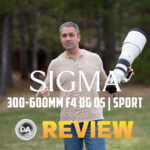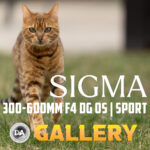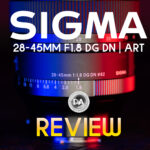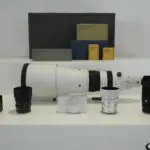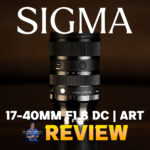
Sigma is on a roll. They have essentially saturated the market with both traditional focal lengths and then more extreme prime and zoom lenses, often releasing focal length and aperture combinations previously unseen on Sony E and Leica L. But the release in early 2025 of the 300-600mm F4 SPORT showed a move into “great white” territory; high end telephoto prime and zoom lenses designed for sports and wildlife photographers. These are the lenses often costing north of $10,000, though Sigma managed to undercut that price point significantly. I’ve been waiting for Sony to release a 200mm F2 for years, as Canon’s EF 200mm F2L IS was one of their main “halo” lenses, useful for sports, yes, but also stunningly good for portrait work in the right hands. A 200mm F2 has finally arrived on Sony, but, surprisingly, it isn’t from Sony. Sigma has stolen the march with the gorgeous Sigma 200mm F2 DG OS | SPORT – the second of their “great white” lenses. And, in typical fashion, Sigma is pricing this lens far below what a first party lens would cost. Is this $3300 lens the one we’ve been waiting for? Find out by reading this review or watching the video review linked below.
Follow Me @ YouTube | Patreon | Instagram | Facebook | DA Merchandise | Flickr | 500px | X
Thanks to Sigma Canada (Gentec) for sending me a review loaner of this lens. As always, this is a completely independent review. *The tests and most of the photos that I share as a part of my review cycle have been done with the Sony a7RV along with the Sony Alpha 1 that serve as my benchmark cameras for Sony lenses. You can visit the product page for the Sigma 200mm F2 SPORT here.
__________________________________________________________________________________________________
AI SUMMARY: The Sigma 200mm F2 DG OS | SPORT lens is a stunning piece of equipment that marks Sigma’s foray into high-end telephoto lenses aimed at sports and wildlife photographers. Despite its premium capabilities and magnificent design, Sigma has managed to offer it at a much more affordable price than first-party alternatives, making it an excellent value proposition. It boasts a beautiful finish and impressive features such as the HLA focus motor and effective stabilization while maintaining a high level of optical performance, providing sharp, contrast-rich images. The primary downside is the lack of teleconverter support, which limits its extendibility for further focal length versatility.
Strengths:
- Exceptional optical performance with sharpness, contrast, and minimal distortion.
- Affordable pricing compared to competitors offering similar specifications.
- Premium construction, robust weather sealing, and aesthetic design.
- Advanced features including effective stabilization and a high-quality autofocus system.
Weaknesses:
- Lacks teleconverter compatibility, limiting its use for longer focal length needs.
- Heavier and bulkier, though expected for its aperture and focal length combination.
- Burst speed limitations on Sony cameras due to third-party restrictions.
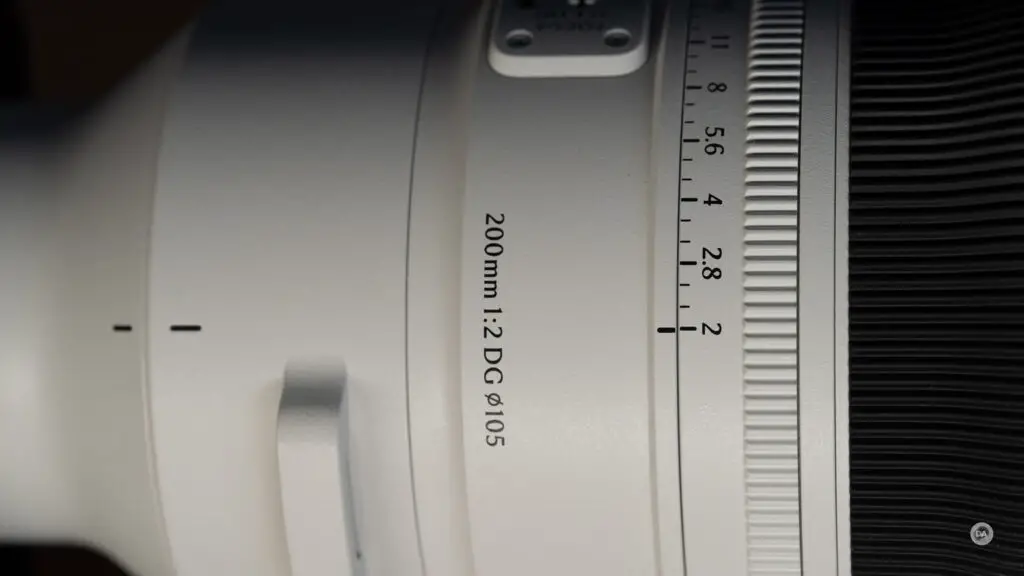
There’s always been some debate over white vs black finish on these big lenses, but there’s no question that, function aside, this is a gorgeous lens. It has a beautiful finish and is loaded with features. The 200 Sport (as we’ll refer to it in this review) seems to have it all, including the premium HLA focus motor for sports work, an effective 6.5 stop OS2 stabilization system, and a huge amount of controls. As a Sports lens, it has Sigma’s premium build quality, including a magnesium alloy body and carbon fiber lens hood and completed with a thorough weather sealing. In short, this is the kind of premium telephoto lens that photographers should be delighted to have on their platform, and the fact that it is reasonably priced is even better. It is a startlingly good portrait lens.

I’m doing this review on Sony, and that still means some unfortunate arbitrary limitations by Sony on third party lenses, including the inability to use teleconverters with third party lenses and an artificial limit on burst speed (*with continuous autofocus). L-mount shooters will not find the same limitations, though it doesn’t appear that Sigma has designed the 200 Sport for use with teleconverters even on L-mount, which is unfortunate. A 280mm F2.8 and 400mm F4 lens sounds very appealing…but we’ll have to see if Sony provides that for us in the future. So does Sigma have a hit on their hands despite these limitations? We’ll dive in a little further to find out.
Build and Handling
Sigma moved to a new build standard in 2025, with rebranding, new packaging, new logos, and more. These new Sport lenses are as nice as I’ve seen from any brand before, and have a very high end feel. What’s more, I had the opportunity to visit Sigma’s Aizu, Japan factory where they create almost every part of these lenses, and I’ve got a fresh appreciation for how much the “Made in Japan” label means to this company.

As is expected with a 200mm lens with a maximum aperture of F2, this is not a small or light lens. It weighs in at 1800g (64.2oz) here on Sony (it is a hair heavier on L-mount), though that is a LOT lighter than the Canon 200mm F2 L IS which weighed a whopping 2520g. The 200 Sport isn’t much heavier than a 70-200mm zoom or the Viltrox LAB 135mm F1.8 (my review here) despite sporting a much more extreme focal length/aperture combination.
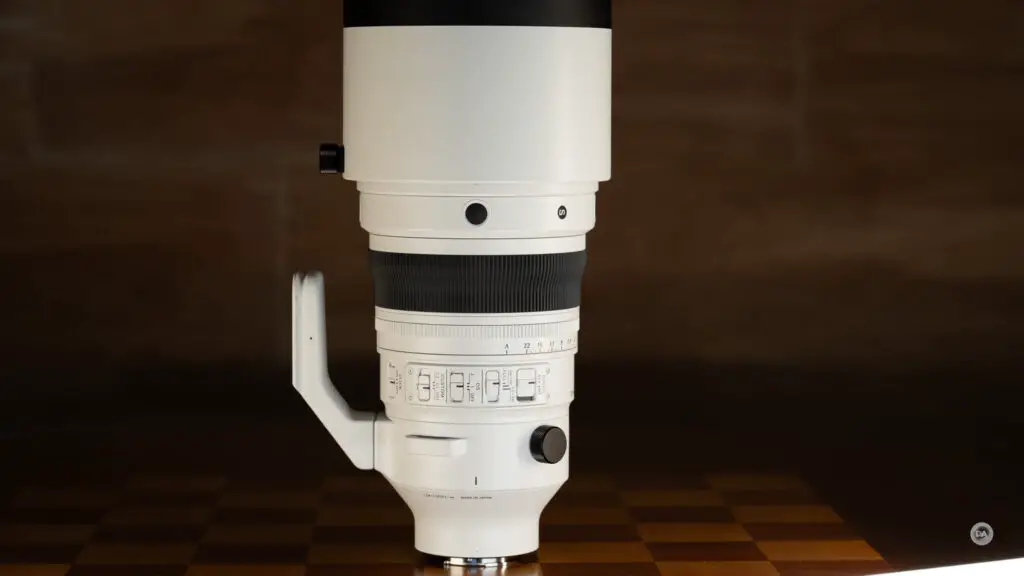
Likewise the size is big but not unusually so. The lens is 118.9mm (4.7”) in diameter and sports a large 105mm front filter size (similar to the 60-600mm Sport). The length is moderate at 203mm (7.9”), which is about the same as a 70-200mm zoom. 200mm F2 lenses tend to have a more squat than long profile because the relative aperture is so much bigger than the focal length.

The lens is obviously big enough to necessitate a tripod collar. This is well executed in typical Sigma style. There is a tension knob that allows you to loosen the tripod collar section to rotate it. The tripod collar has to come near the lens mount to provide proper balance, as this isn’t a particularly long lens. I’ll note that the balance point is excellent, making this easy to set up even on the extremely lightweight tripod I used on my Nova Scotia trip. There are strap attachment points on either side of the tripod ring.
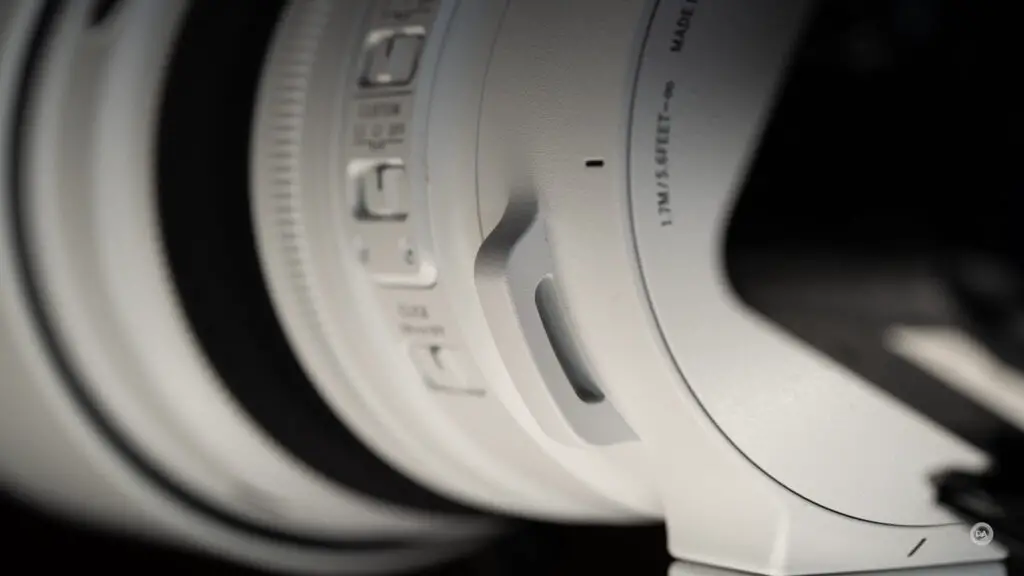
The tripod foot has Arca-compatible grooves and rotates smoothly when the tension knob is released. There are detents at the cardinal positions to allow easier alignment at these points. The tripod collar is not removable and removing/changing the foot will require Allan keys (included).
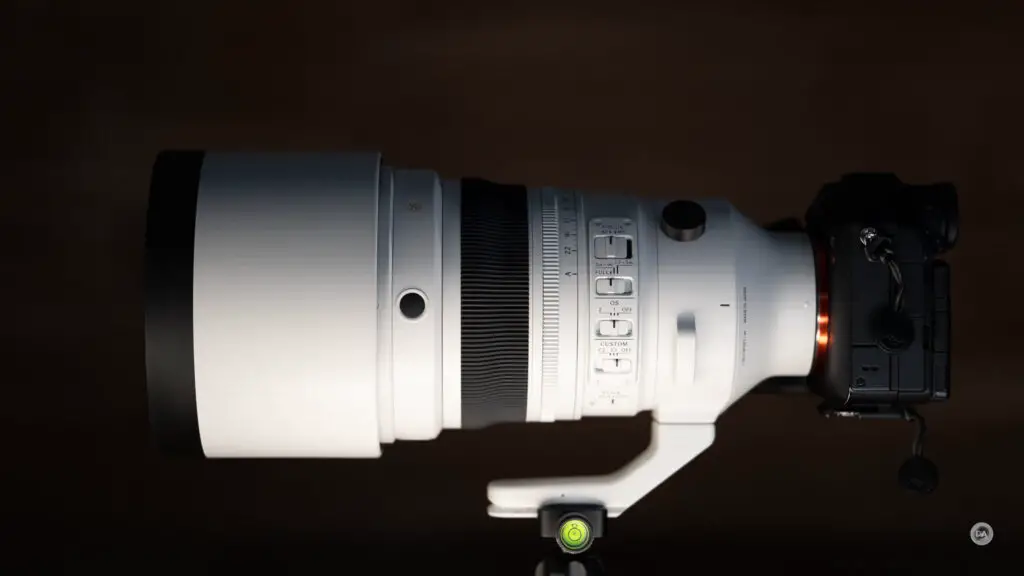
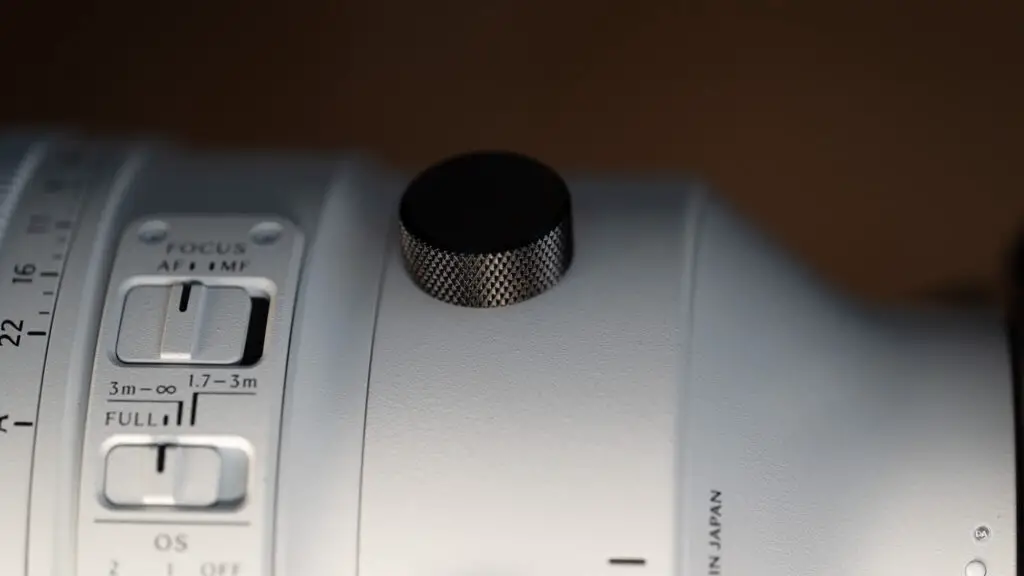
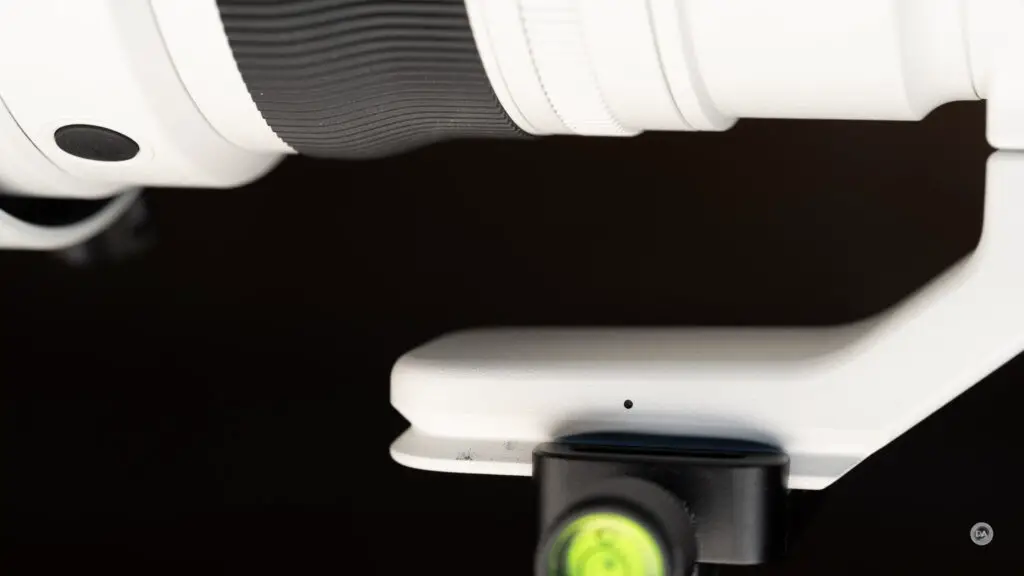
It is worth noting that this foot is longer (7.2mm) than the one found on the 70-200 Sport and also leaves more space (10mm) between the lens barrel and the foot, making it much more comfortable for carrying. This foot (TS-171) can be swapped with the TS-151 found on the 70-200 Sport if you prefer one foot over the other.
This is an extremely feature rich lens, including a Sony GM level approach to aperture control. You have the option to use clicks, with one third stop detents, or to declick the aperture for smooth aperture racking. The Click/Declick switch is low down on the left side of the lens.
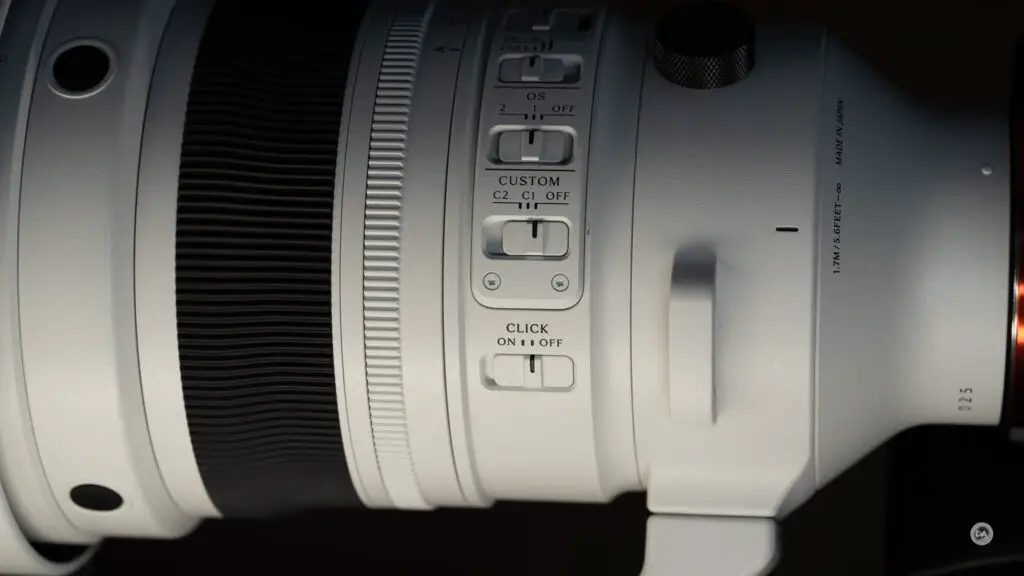
There is also an “iris lock” switch that will allow you to either lock into or out of the manual aperture ring. This ensures that you won’t accidentally end up out of the manual aperture settings or into them if you prefer to control aperture from within the camera. The iris lock switch is found on the right side of the lens barrel.
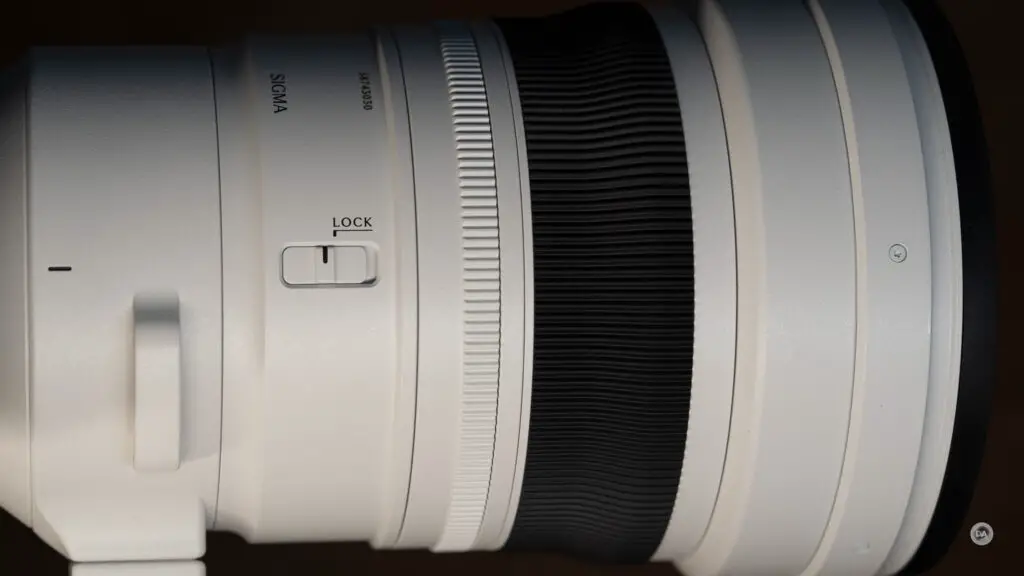
The aperture iris has 11 blades, which helps maintain a nice circular shape when the lens is stopped down.
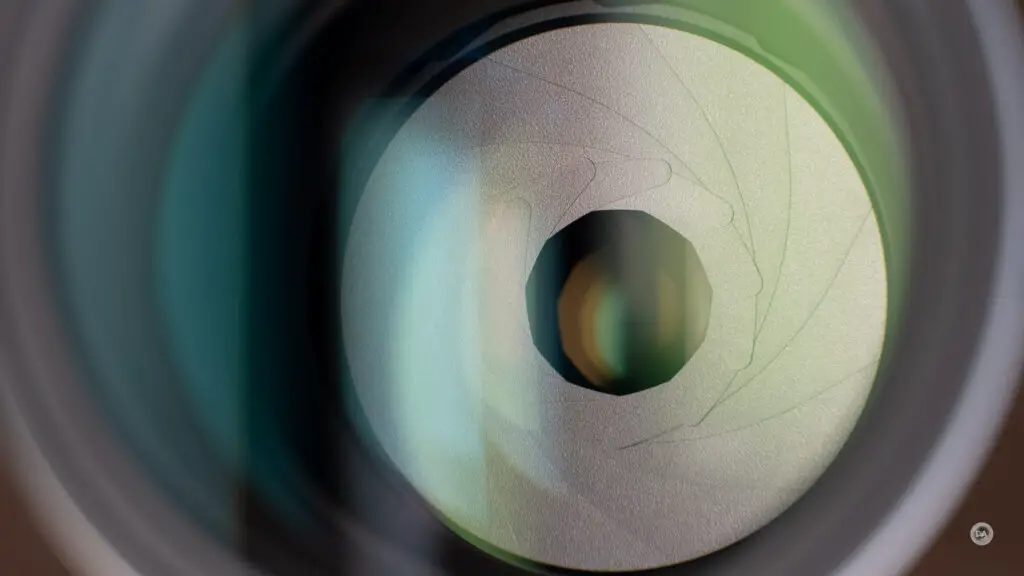
There is a bank of switches on the left side of the lens that includes an AF | MF switch, a three position focus limiter, an OS mode switch (OFF | Mode 1 [Standard] | Mode 2 [Panning Mode]), and finally a three position Custom switch ( OFF | C1 | C2).
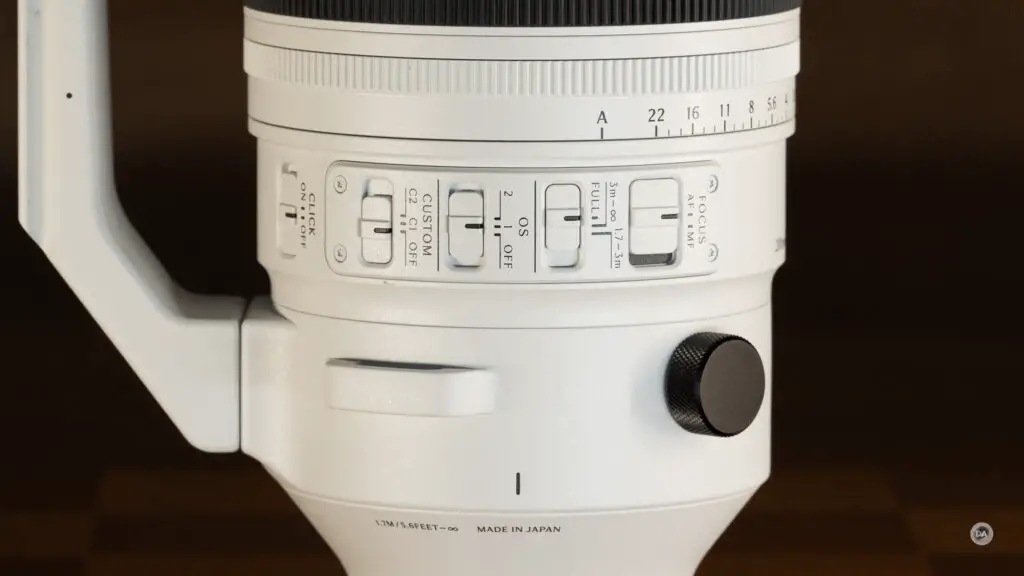
L-mount purchasers will get more out of this final switch, as there is a USB UD-11 dock available for L-mount that will allow you to customize the settings. No such dock exists for Sony E-mount, so that means for Sony users (like myself) the C1 and C2 are by default more options for the OS. C1 is Dynamic View (more stabilization of the viewfinder) and C2 is “Moderate View”, which gives you less viewfinder stabilization (allowing you to follow action more naturally) but gives you more stabilization assistance at capture. I would like to see Sigma start to institute a USB-C port on their lenses like some other brands and eliminate the dock (and maybe given a bit more customization to Sony users).
The OSS (Sigma calls this most recent version “OS2”) is very effective, being rated at a very high 6.5 stops. I feel like Sigma’s OS2 may the most effective lens-based stabilization that I’m seeing on Sony. The lens feels extremely stable and very easy to handhold. I could get acceptably sharp results at 1/8th second and easily repeatable results at 1/15th second.
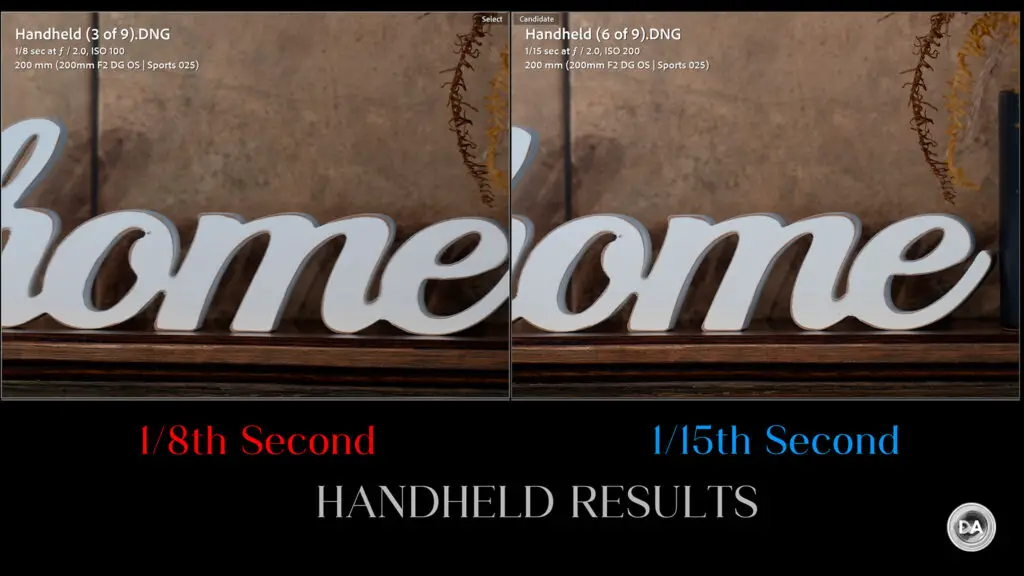
Next comes the manual focus ring. It has beautiful damping and a nicely beveled design that makes it both ergonomically and functionally pleasing to use. I found manual focus easy to achieve for those times you might want to fine tune focus.
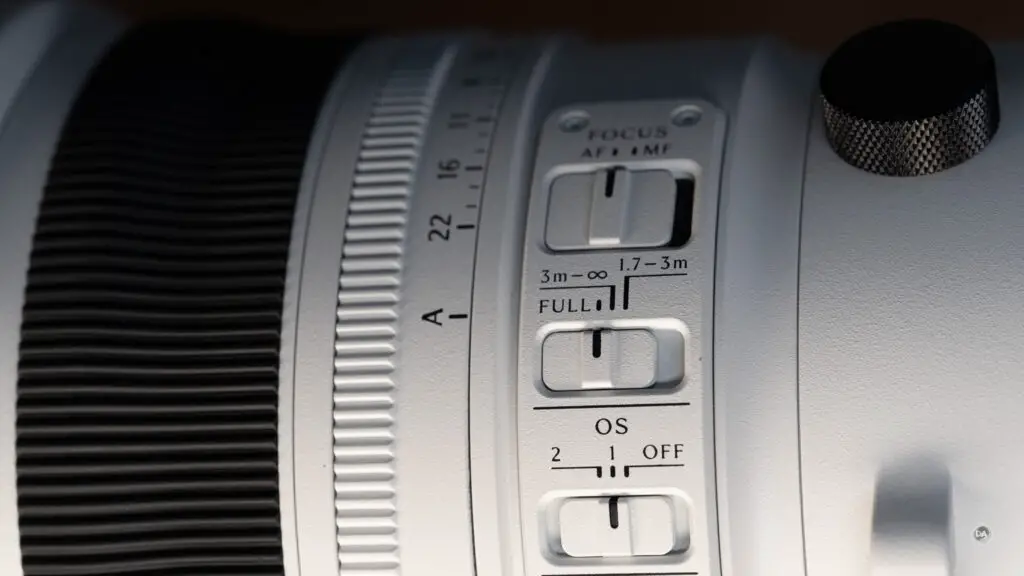
Next comes the manual focus ring. It looks relatively narrow in the picture below because the lens is so big, but in reality it is 3cm wide. It has a rubberized, ribbed finish and moves nicely with a good balance of freedom and resistance.
The pearlescent finish of the “thermal insulation paint” is gorgeous. Sigma waited a long time to do “great whites”, but now they are here, and they look great. I find Sigma’s logos and fonts pop nicely on the lenses.
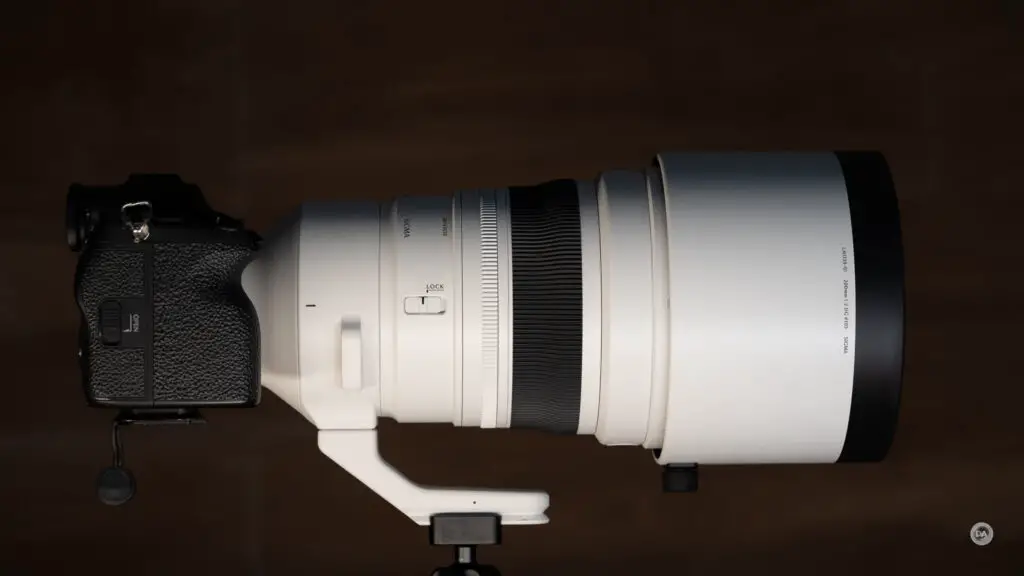
The lens hood is massive and relies on a tension knob to hold it in place. It has a rubberized lead edge to allow you both absorb a little shock if you bump into something but also gives you a place to set the lens down on with the camera attached.
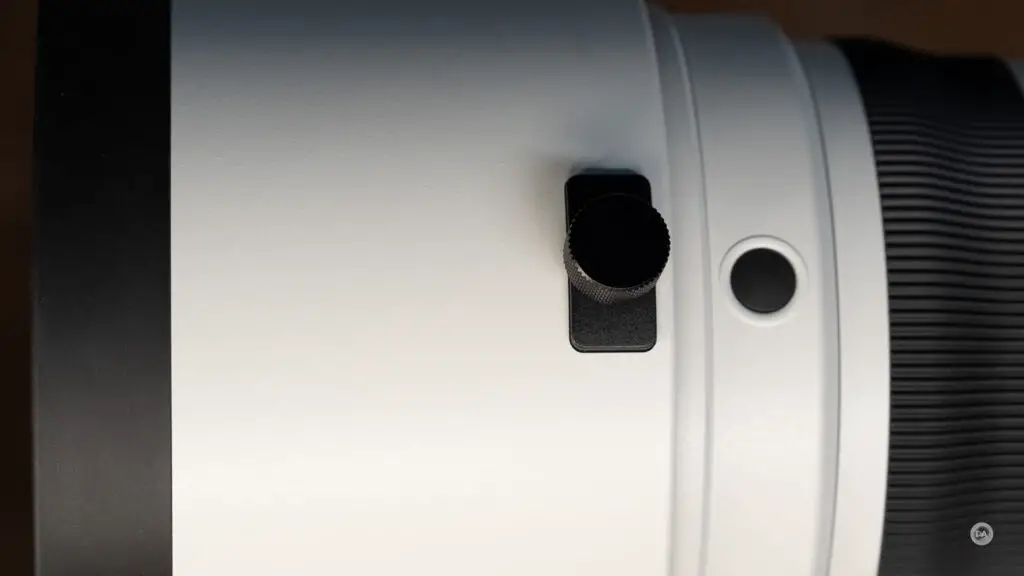
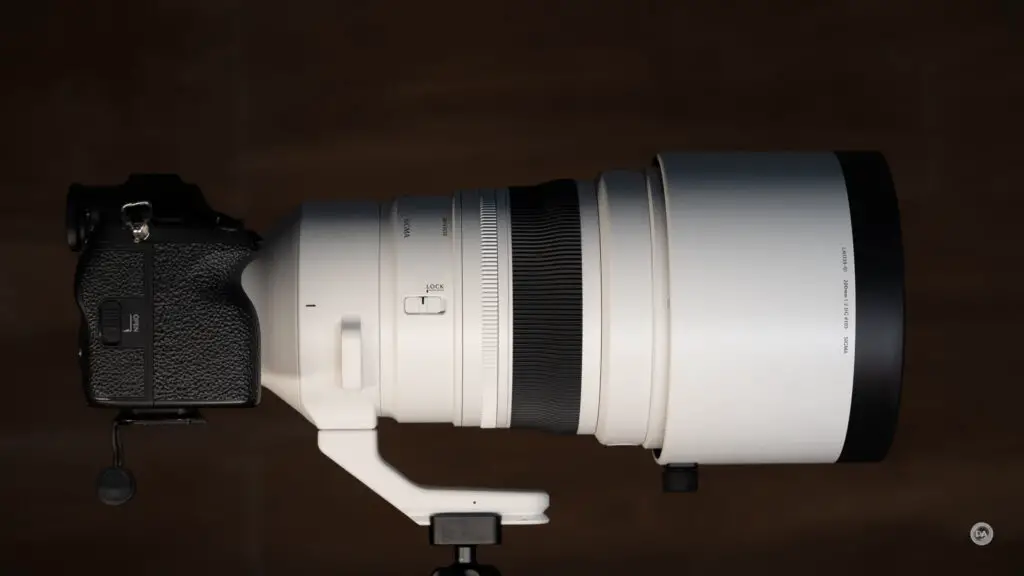
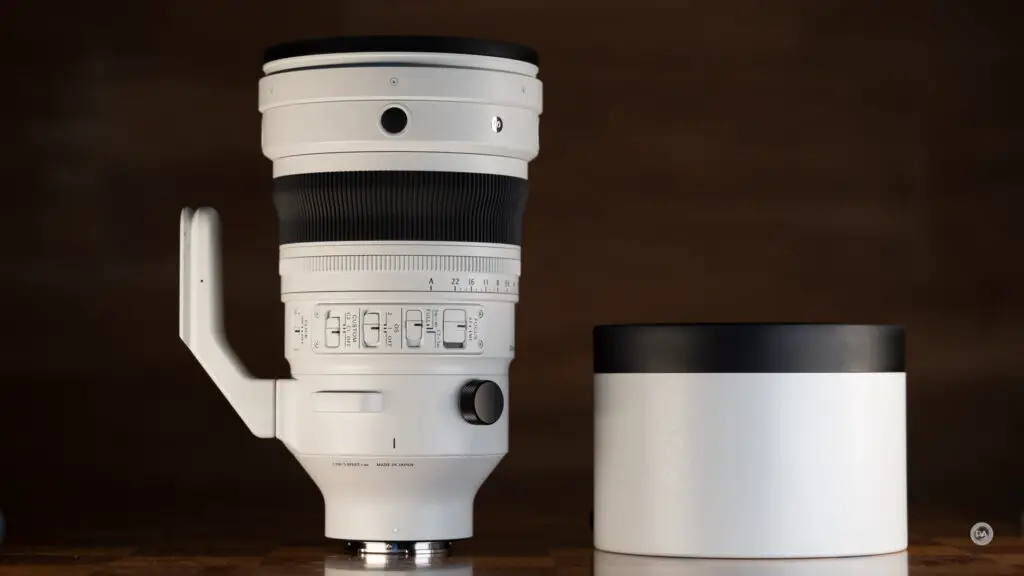
Remove that hood and you’ll find an absolutely massive amount of glass up front.
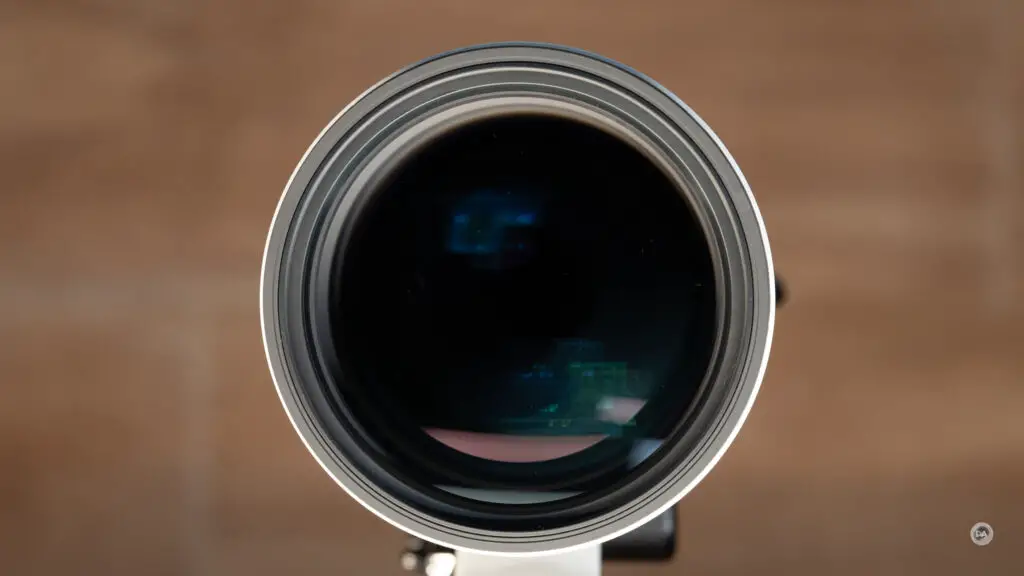
My loaner didn’t come in the retail packaging, so while I had a traditional pinch cap included, I’m not sure if a nylon cap is also included like with the 300-600 Sport.
Sigma has included three custom/function buttons located on the top, left side, and bottom, so one falls to hand whatever orientation you are shooting in. The function of the buttons is set from within the camera, and these are redundant buttons, so all three will have the same function.
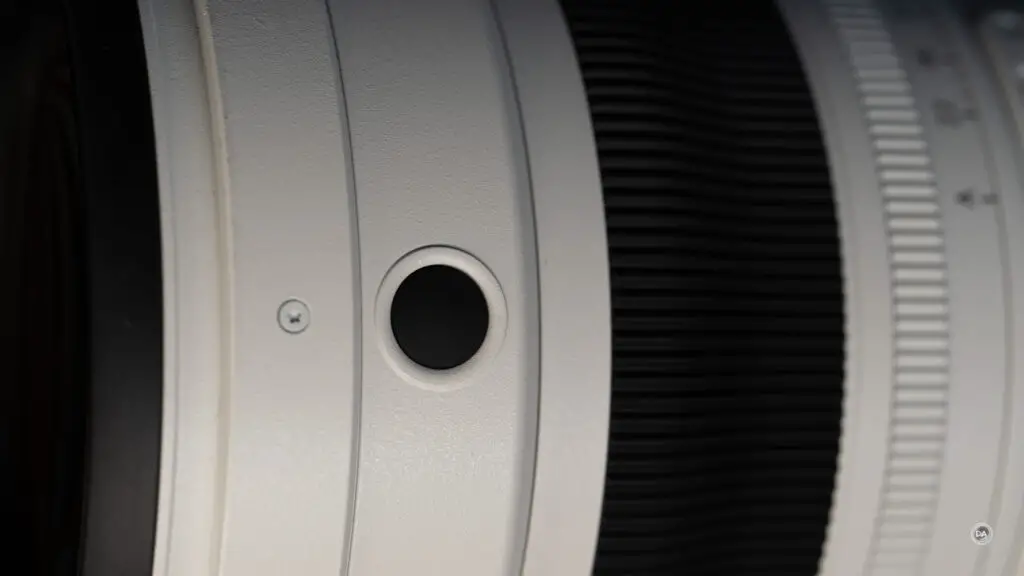
Sigma’s Sport lenses include their highest grade of weather sealing. While I don’t have updated language for the 200 Sport, Sigma said this regarding the similarly built 300-600 Sport: “The mount joints, manual focus ring, zoom ring, custom switches and other control switches, and exterior joints are all protected from dust and splash by a dust- and splash-resistant structure. Further, the frontmost surface of the lens is coated with a water- and oil-repellent coating to facilitate maintenance when water droplets or dust adhere to the lens.”
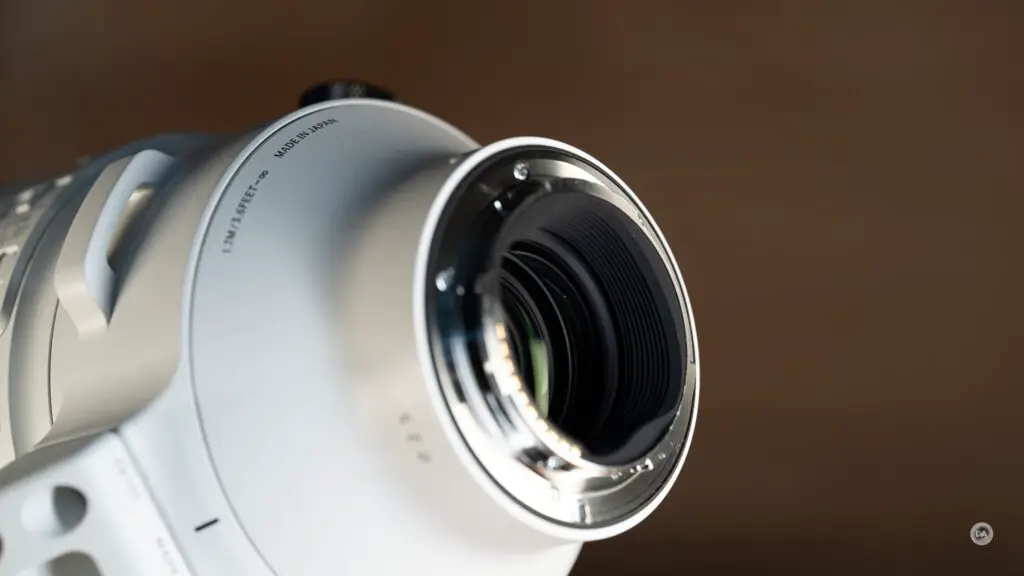
One thing I did note when taking a photo of the rear gasket and mount is that the rear element is fairly close to the mount. I saw no mention of teleconverter compatibility even with the L-mount version, and when I (carefully) attempted to mount my Sony 1.4x TC, I discovered that there is not physically room for a TC to mount. That, to me, is a missed opportunity.
Longer telephoto lenses like this are rarely exceptional for up close work, and that’s true here. The minimum focus distance is 170cm (67”), and that results in a lackluster 0.13x magnification (1:7.6 magnification ratio). Here’s what that looks like on my test chart:

That’s about the average we see on an 85mm lens, for example, so definitely tight enough for close framing on the face, but not for any kind of macro(ish) work. On the plus side, the lens remains exceptionally sharp and high contrast even at very close focus distances.

Let’s conclude by looking at that price a little closer. Canon’s EF 200mm F2L IS launched in 2008 at a MSRP or $5999 USD. Fast forward 17 years, and, despite wild inflation and new US tariff policies that have increased the price of lenses in 2025, the 200 Sport can be had for just $3299 USD. That is nearly half the price of what the Canon cost nearly 20 years ago, and still cheaper than what it costs on eBay used. This isn’t a cheap lens, no, but that‘s incredible value. The only other 200mm F2 lens on the market for modern mirrorless cameras is Fuji’s 200mm F2 OIS (my review here), which is only designed for APS-C and still costs $5500 (that does include a 1.4x teleconverter).
Autofocus
I feel like Sigma has waited to release higher end telephoto lenses like this until they had developed a more premium autofocus system. Their initial offerings on Sony (and L-mount) featured STM focus motors, but Sigma has since released their more powerful, smoother HLA focus motor (High speed Linear Actuator). The HLA motor has much more torque/thrust than lenses equipped with the stepping motor, which is very important when you are talking about a lens with larger, heavier optical glass like this one. The increased thrust of the focus motor means that it is capable of moving much faster and is thus much more reactive. Sigma claims that using the a9III the 200 Sport can focus in 0.251 seconds according to CIPA standard tests. That’s easily fast enough to perfectly stop action with a dog running fast towards the camera.
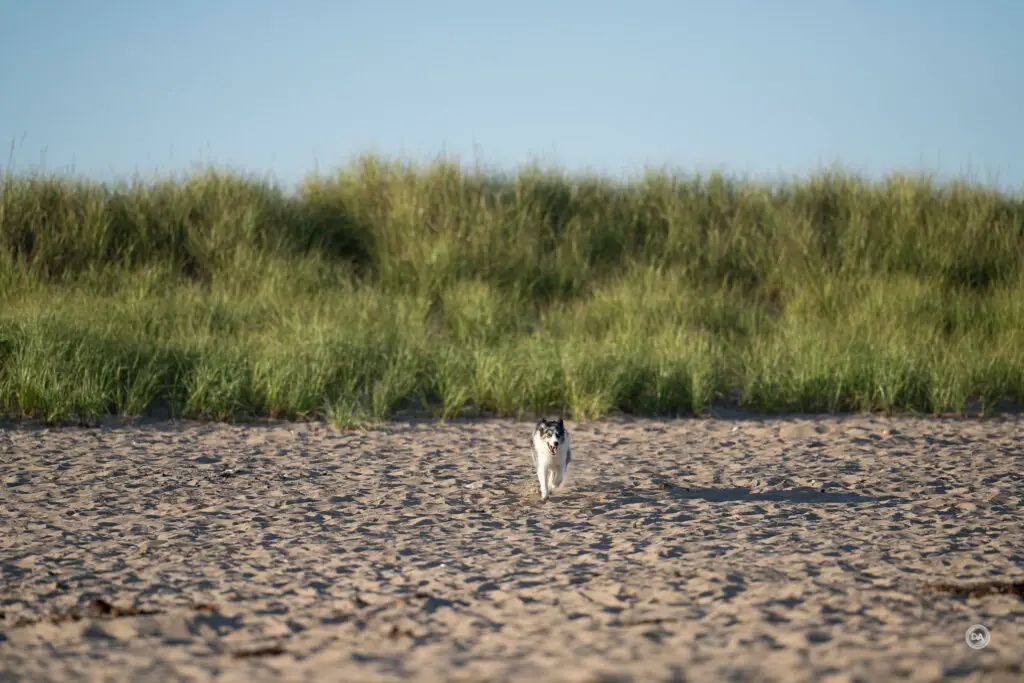


I had no problem quickly acquiring and tracking birds in flight (though 200mm is a bit short for birding).


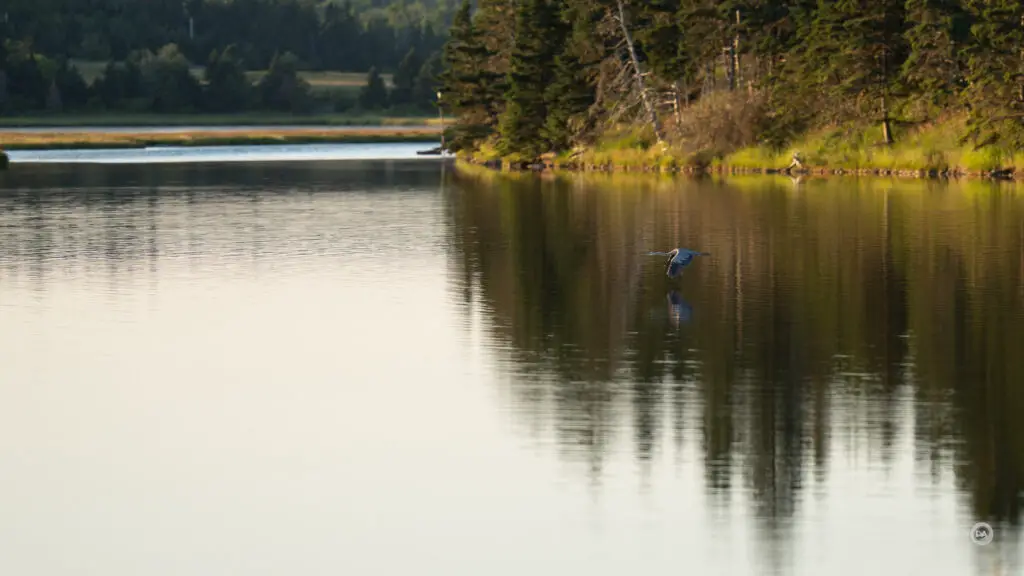



Focus sound is typically silent, though I did notice some focus noises when I did my standard focus tests and was racking back and forth over and over.
I didn’t have a chance to test sports specifically, but past experience says that focus speed will be excellent and focus accuracy (keepers during a burst) will be good but not quite native Sony good. I was even able to pick up bees in flight with reasonable proficiency.

Portrait work was effortless in a variety of conditions, including backlit or layered situations.



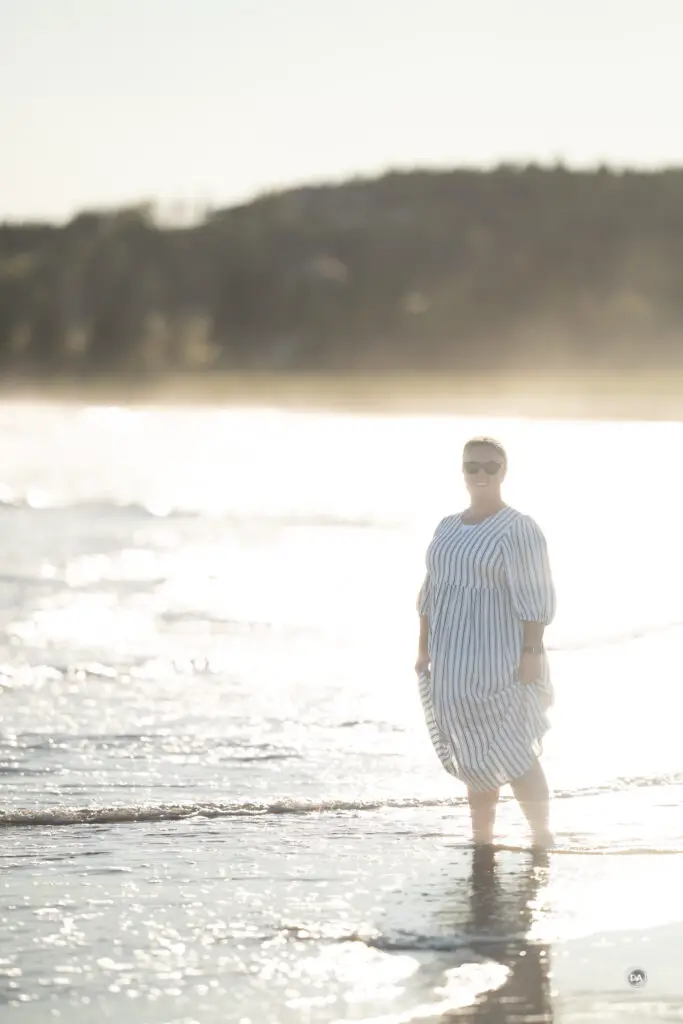

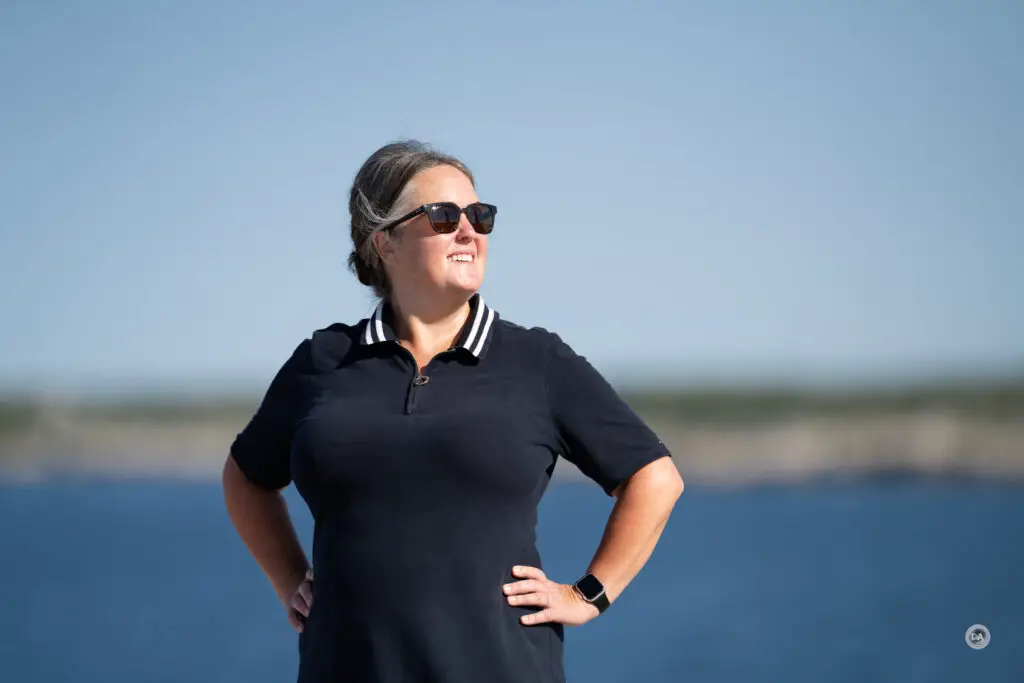
This is a gorgeous portrait lens!
Autofocus for stills was generally excellent. I regret Sony’s continued unnecessary limitation of burst speed to 15FPS (with continuous autofocus) with third party lenses, but that’s not Sigma’s fault.ns.
Video AF
I also saw mostly good results for video work. Autofocus pulls were fast for a longer focal length, though there is a quick pulse when focus arrives at the destination and adjusts final focus lock.
There is some focus breathing when doing big focus changes like I do in my initial focus pull test, but it is minimal when doing smaller focus changes like in my hand test.
My hand test (where I alternately block the camera’s view of my face with my hand and then remove it to allow focus to move to my face) went fairly well, with confident transitions back and forth. There still was a little focus settling, however, so I wouldn’t mind seeing a firmware update in the future to tweak that behavior a bit.
Focus was stable when I shot a video clip during a portrait session and had my model move through a variety of poses. Here’s a freeze frame from that clip:

This could be a gorgeous video lens for those wanting either tight framing shots of people speaking or environmental shots where you really want separation sharp separation of your subjects from the backgrounds. Take a look at this quick shot of people in the ocean – even at a distance they are very sharply delineated from the background.
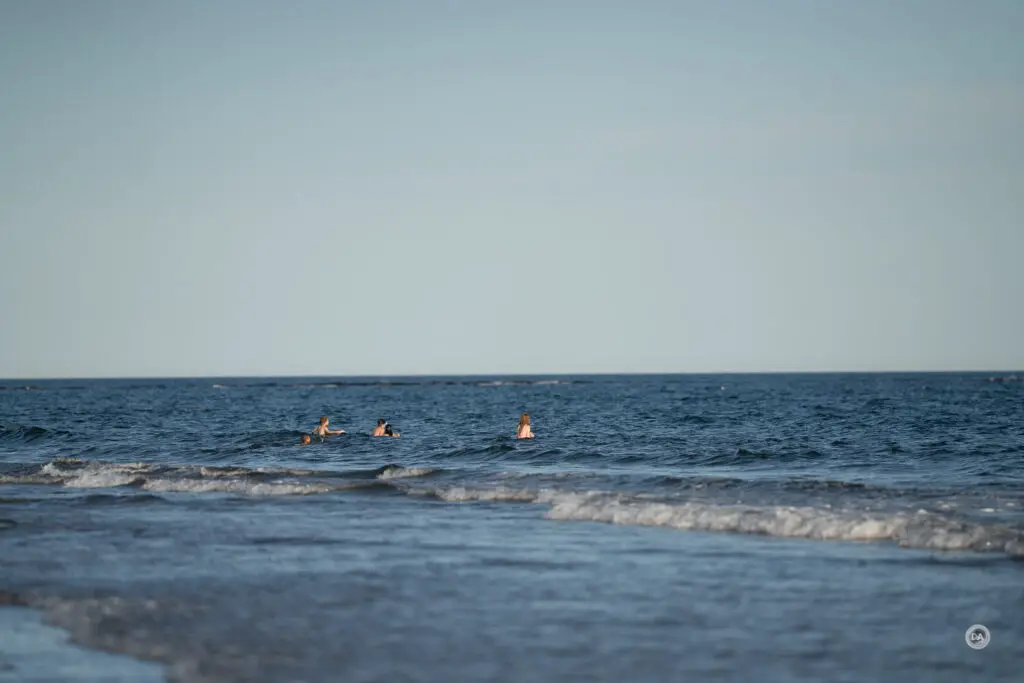
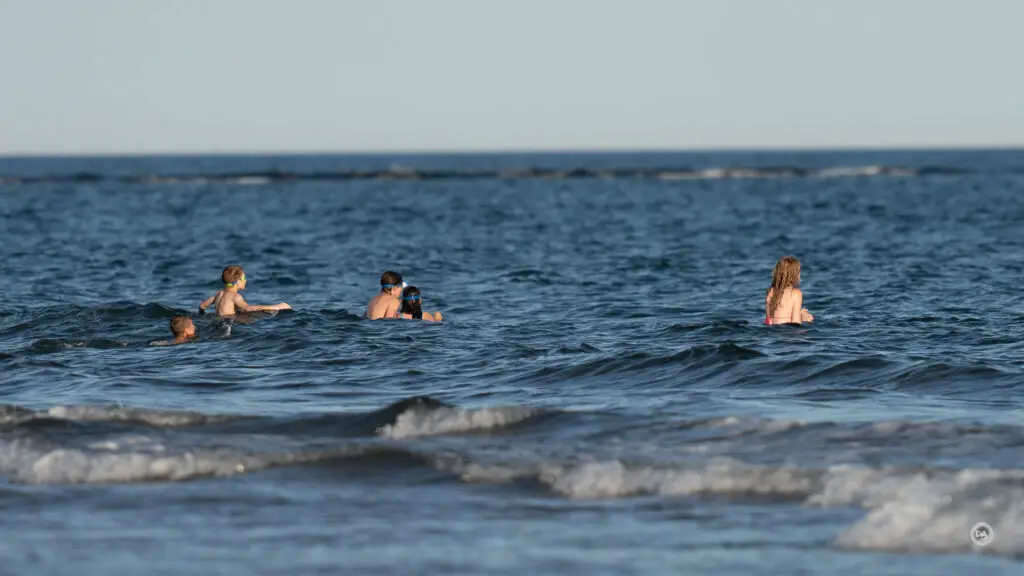
Sigma has done a solid job on the autofocus here.
Image Quality Breakdown
Lenses like this are by necessity fairly complex. This is an extreme aperture/focal length combination, so the optical design is 19 elements in 14 groups. There are 2 FLD elements and 2 SLD elements as a part of the design. The MTF chart is very close to a straight line, showing unusual consistency from the center to the edges of the frame.
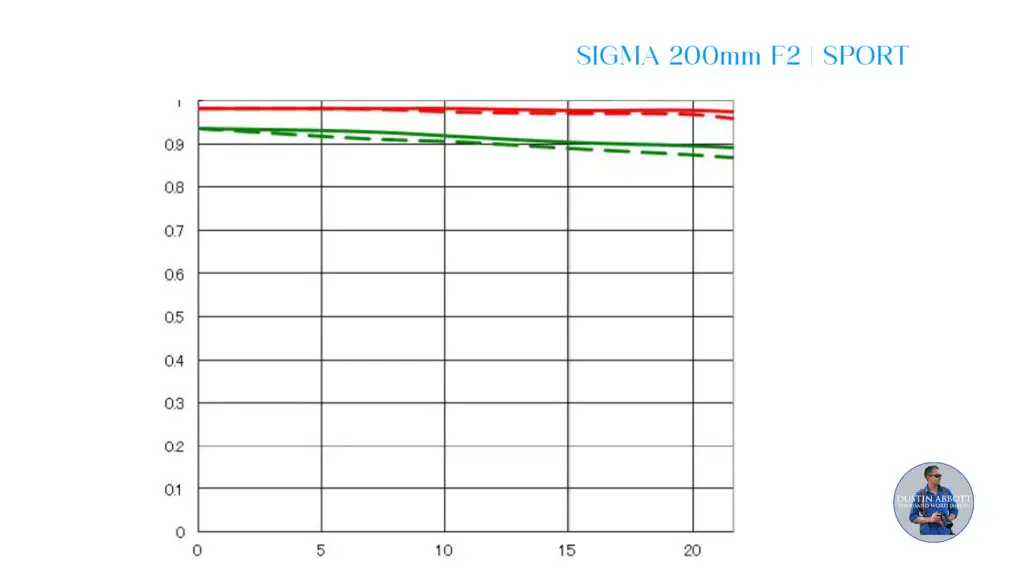
To provide some perspective, here’s a look at some alternative lenses. Sigma’s 105mm F1.4 was an exceptional lens, but you can see that the new 200 Sport is sharper all across the frame. Sigma 70-200 Sport shows fairly similar sharpness though with more astigmatism. Canon’s 200mm F2L was close to as sharp in the center, but softer everywhere else.

Sharpness and contrast are basically perfect from F2 on:


We’ll start by looking at vignette and distortion.
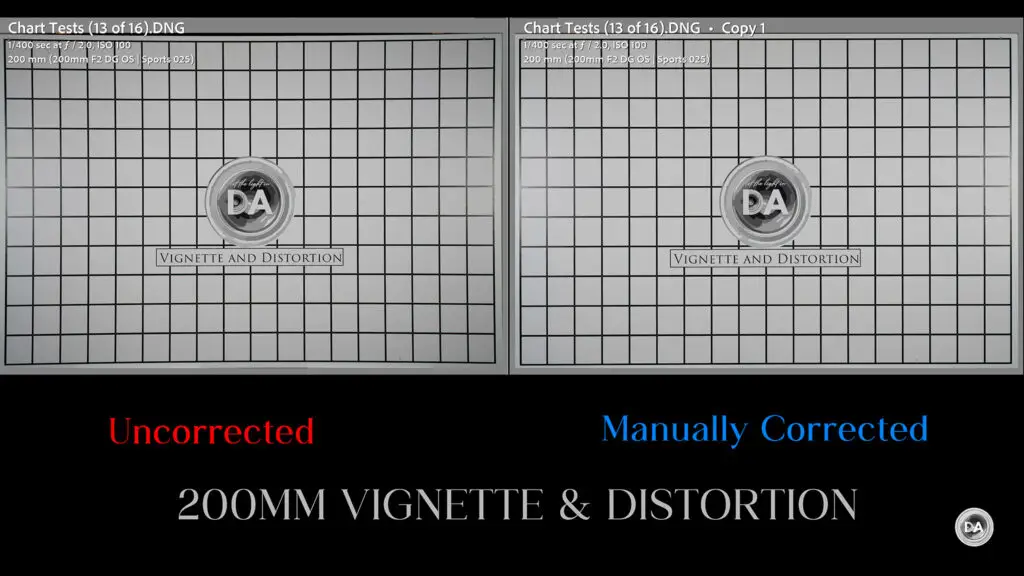
Neither are an issue. There’s a bit of pincushion distortion (-4 to correct), which is just enough to be flattering to models (it slims a bit) without creating any problems. Vignette is very low, requiring just a +27 to correct above. That’s about one stop, or not enough to notice in most situations. Sigma has thorough profile support on both Sony and L-mount, so these are basically non-issues.
Testing for longitudinal chromatic aberrations (LoCA) show a tiny bit of fringing before the plane of focus, with almost nothing after the plane of focus.

I also saw zero issues with LaCA (lateral chromatic aberrations), which shows up along the edges of the frame. All of the transitions here are very neutral.

This is a high-end optical instrument, and they’ve corrected the issues in the optics rather than through software.
So how about resolution and contrast? My formal tests are done on the 61MP Sony a7RV.
The MTF suggests that this is a very sharp lens all across the frame even at F2. Is that what we see? Here’s a look at the test chart from which the crops come.

Here are crops from across the frame at F2 and shown at a 200% magnification.



That’s impressive. We see a similar level of performance across the frame. What’s more, if I compare the upper left and the upper right corners, I find an outstanding degree of consistency in the centering of the lens.

This is very close to a perfect optical instrument at F2. That makes it all the more shame that it cannot be used with teleconverters, as this is a lens that clearly could have handled the minor image degradation that invariably comes with using TCs.
Stopping down to F2.8 produces a slight contrast boost in both the center:
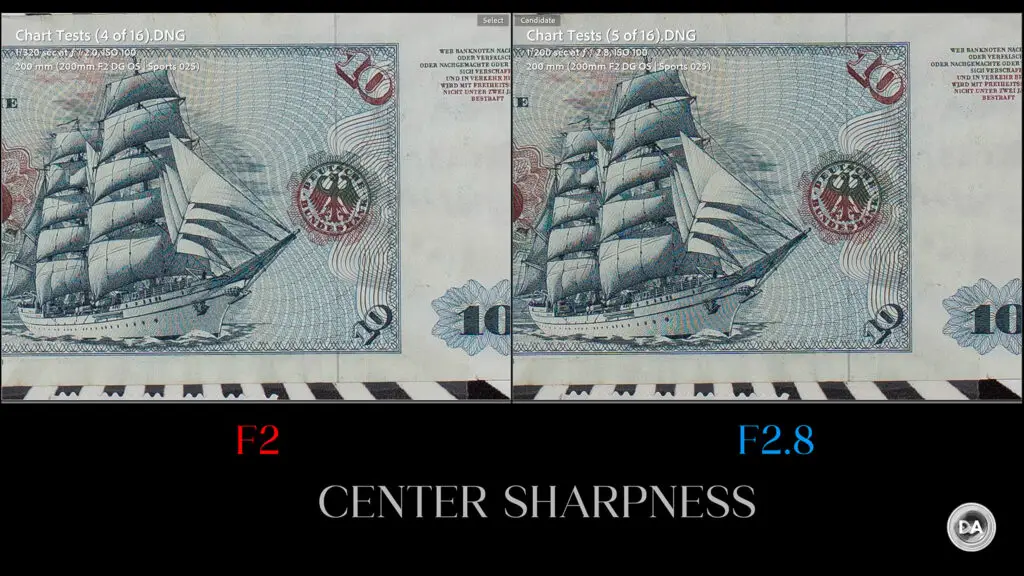
…and in the corners:

Stopping down further should only be done for depth of field considerations, as while you’ll gain a tiny bit in the corners, you will lose a bit in the center of the frame. At landscape apertures like F5.6 and F8 you’ll find a near perfect ability to delineate fine details all across the frame.


Diffraction will start to take a bite out of contrast by F11, but more noticeably by the minimum aperture of F22.

One of the chief advantages of a 200mm F2 is the ability to create nearly a cutout effect of your subject from the background, even when shooting at a distance. You can make really unique full length portraits.

That ability means that the walkers behind my wife in this casual portrait become just a vague impression rather than serious distraction.
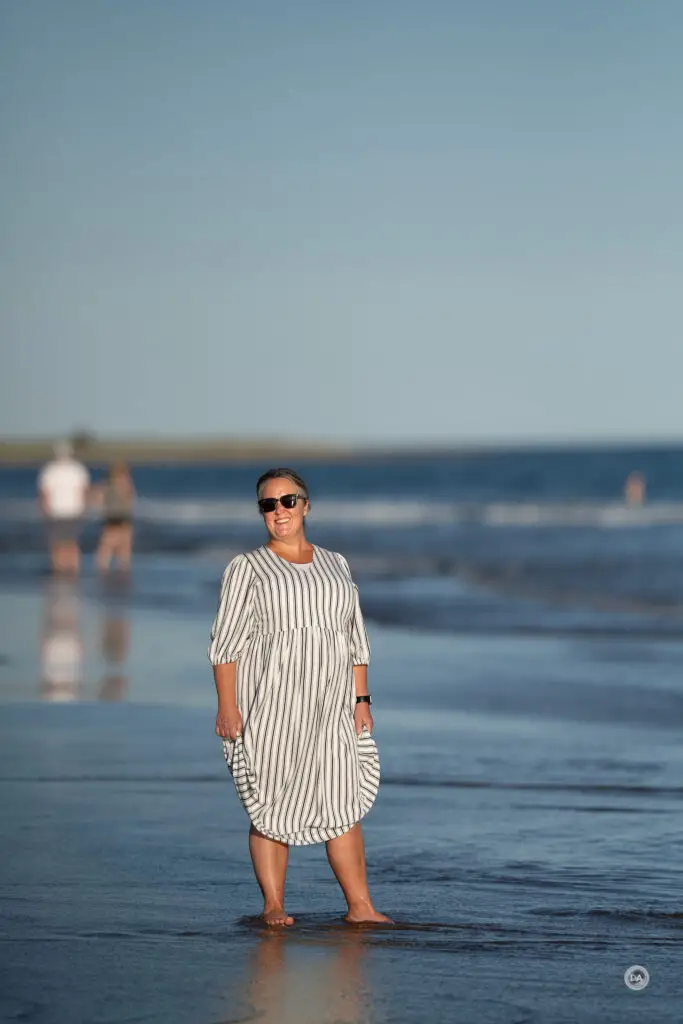
How about the bokeh quality? As you’ve probably already seen, the bokeh is seriously nice. The geometry isn’t flawless (there’s some oval shapes in some specular highlights), but everything else is gorgeous.
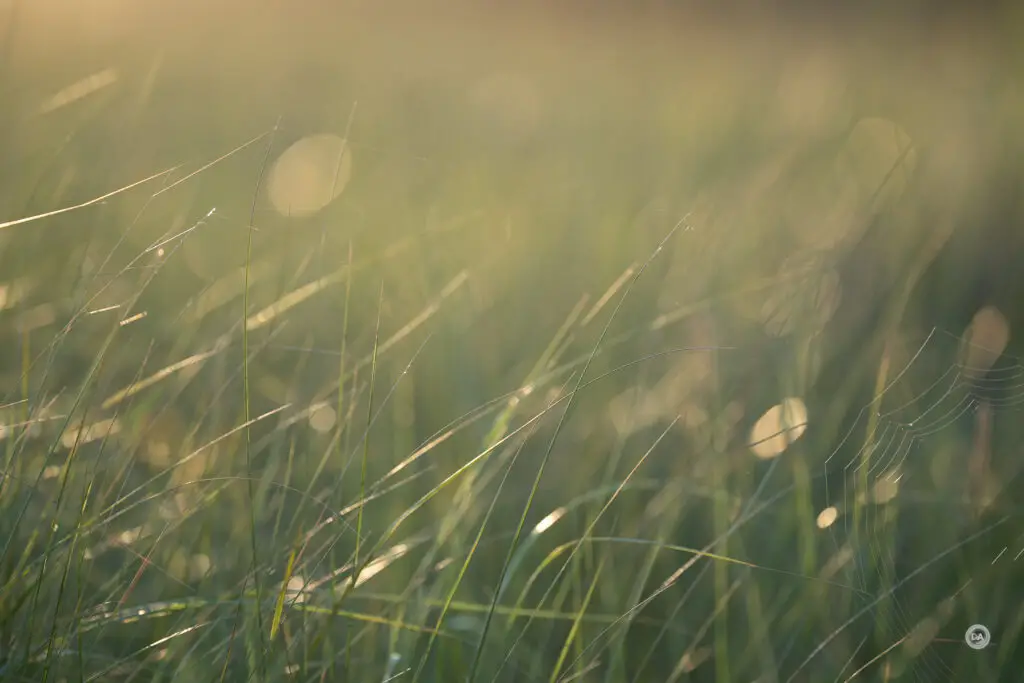
Here at Peggy’s Cove the famous lighthouse isn’t completely blurred away but instead fades away nicely.

The background of many different rocks along the shore of the Atlantic has the potential to be busy, but I feel like it is nicely handled.

Even with the sun right in the frame, there is no ugly ghosting.
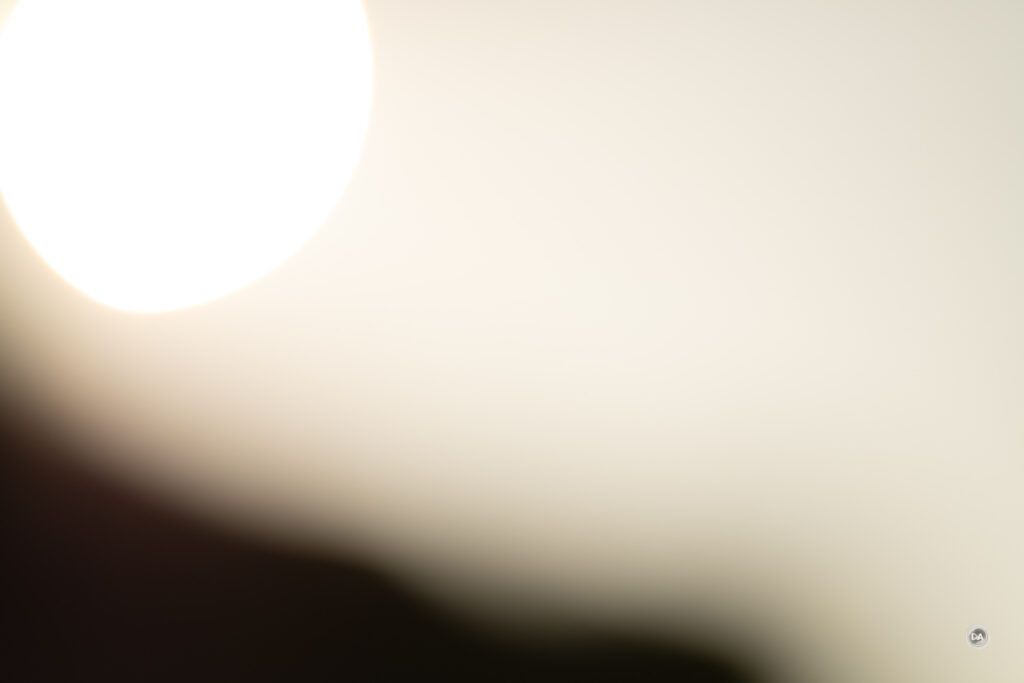
This backlit shot with the sun right out of frame just shows a nice glow.
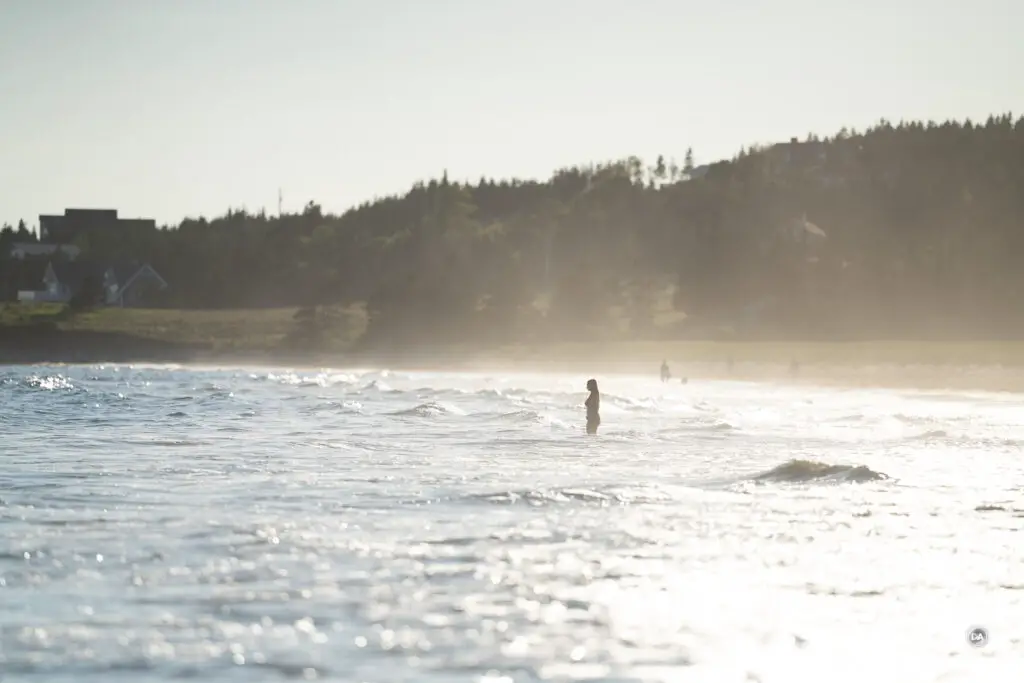
The optical performance is definitely fantastic. Here’s a mini gallery of extra images for you to enjoy.
Conclusion
The Sigma 200mm F2 DG OS | SPORT is a complete package. This is definitely a statement lens for Sigma, showing that they are capable of engineering lenses that are as good or better than anything first party lens makers can produce. It is beautiful to look at, extremely feature rich, and high performing in every metric.

The biggest fly in the ointment is, to me, the lack of teleconverter support. That’s a shame, as while it might not matter much to portrait photographers (200mm is about as long as you’d want to go), those that shoot sports or wildlife might really enjoying having a 280mm F2.8 or 400mm F4 option available.

But in all frankness, I have to scrape pretty deep to find any real complaints about Sigma 200mm F2 DG OS | SPORT lens. It’s a fundamentally amazing lens that does basically everything extremely well. I found it a blast to use and it produced a lot of images that I was completely delighted with. It is a bit odd to think about a $3300 lens as a value proposition but compared to all such lenses that have come before, this is a tremendous bargain.
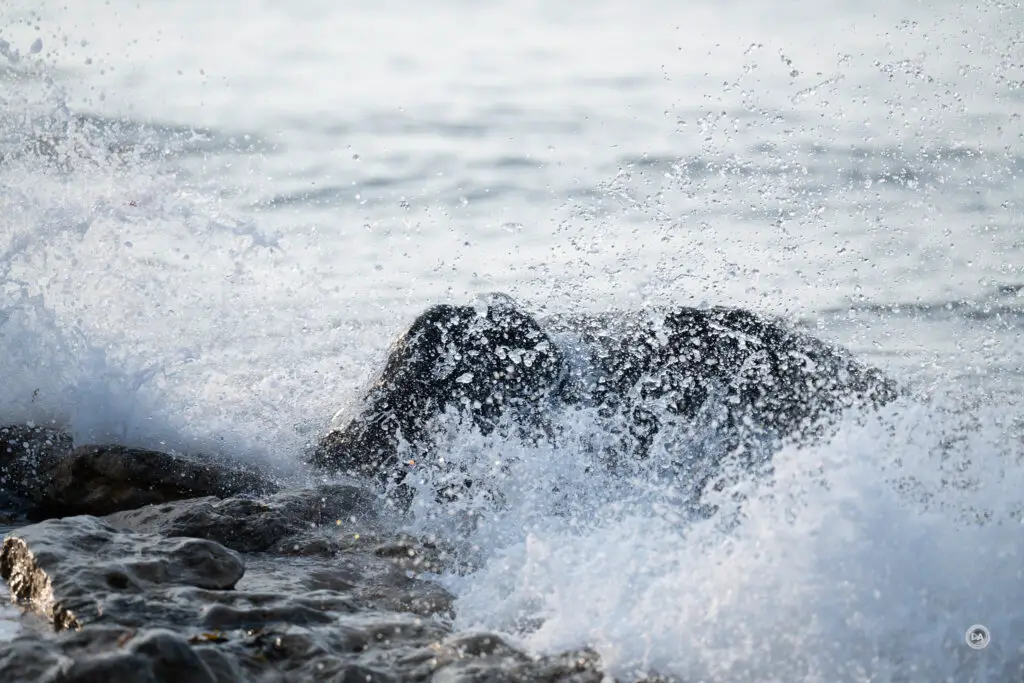
Pros:
- The first of its kind on mirrorless
- Beautifully made
- Oozes premium quality
- Feature rich
- Thorough weather sealing
- HLA focus motor is quiet and has a lot of thrust
- Extremely sharp lens over the whole frame
- Good flare resistance
- Low distortion and vignette
- Near perfect control of aberrations
- Beautiful colors
- Lovely bokeh
- Constant F2 aperture
- Great subject isolation
- Great value for what it offers
Cons:
- No teleconverter support
- Burst rate will be limited on Sony
_________________________________________________________________________
GEAR USED:
Purchase the Sigma 200mm F2 OS SPORT @ B&H Photo | Adorama | Amazon | Camera Canada | Amazon Canada | Amazon UK | Amazon Germany
Purchase the Sigma 300-600mm F4 OS SPORT @ B&H Photo | Adorama | Amazon | Camera Canada | Amazon Canada | Amazon UK | Amazon Germany
___________________________________________________________________
Purchase the Sony a7RV @ B&H Photo | Adorama | Amazon | Camera Canada | Sony Canada | Amazon Canada | Amazon UK | Amazon Germany
__________________________________________________________________
Purchase the Sony a7IV @ B&H Photo | Adorama | Amazon | Camera Canada | Sony Canada | Amazon Canada | Amazon UK | Amazon Germany
_________________________________________________________________
Purchase the Sony Alpha 1 @ Camera Canada | B&H Photo | Adorama | Amazon | Sony Canada | Amazon Canada | Amazon UK | Amazon Germany | Ebay
_________________________________________________________________
Want to support this channel? Use these affiliate links to shop at: B&H Photo | Amazon | Adorama | Camera Canada | Amazon Canada | Amazon UK | Ebay | Make a donation via Paypal
Buy DA Merchandise https://bit.ly/TWIMerch

Keywords: Sigma 200mm, DG, SPORT, SPORTS, Sigma 200mm Sport, Sigma 200mm F2, Sigma 200mm F2 DG OS Sport, Sigma 200 Sport Review, #SIGMAEmount, #SIGMA #SIGMA200mmF2Sport, #SIGMASport, #SIGMASPORTS, Full Frame, Review, Sony Alpha 1, Sony a7RV, Review, Hands On, Dustin Abbott, Real World, Comparison, Sharpness, Bokeh, Flare Resistance, Autofocus, Image Quality, Sample Images, Video, Photography, let the light in, weathersealing, #letthelightin, DA

